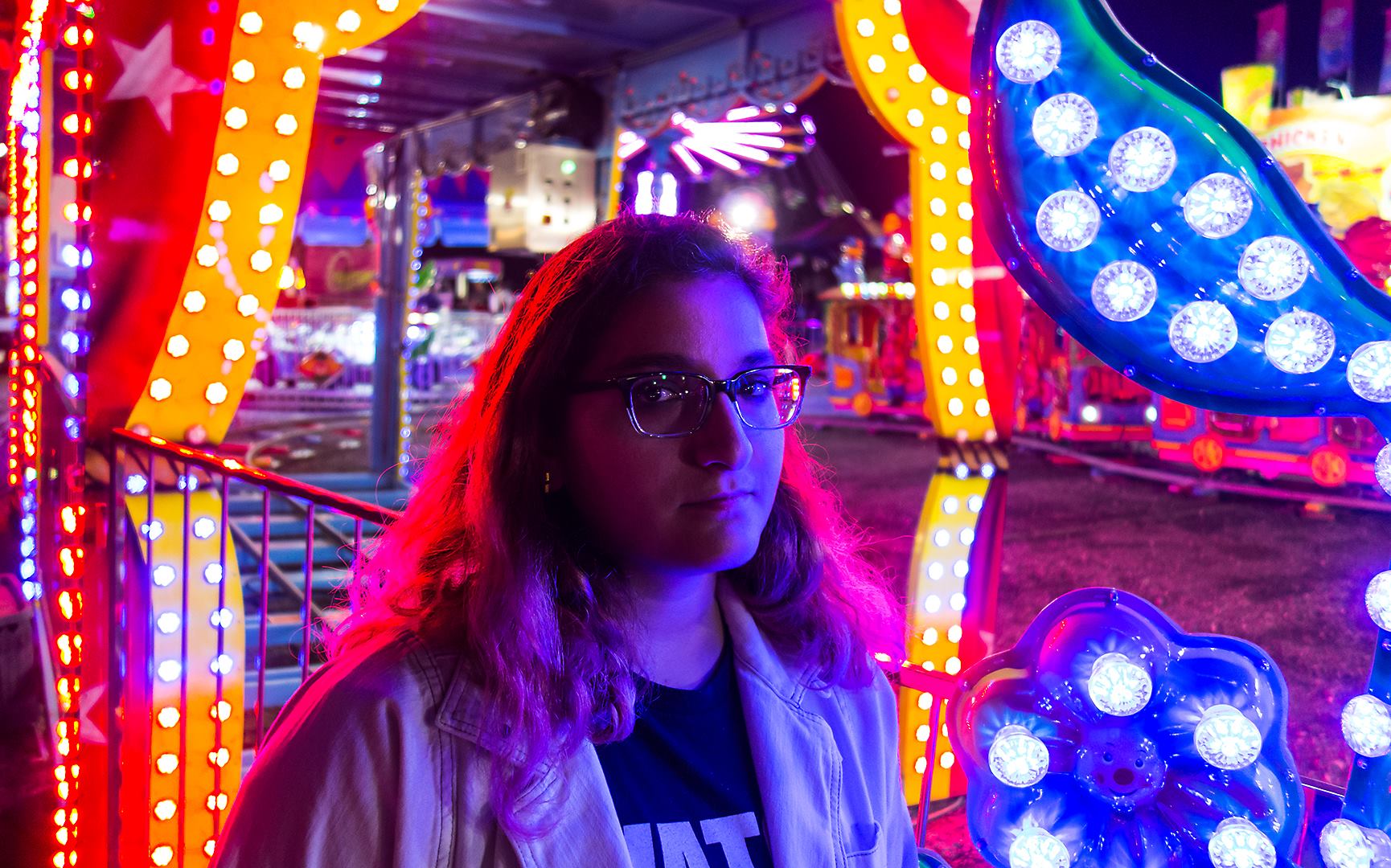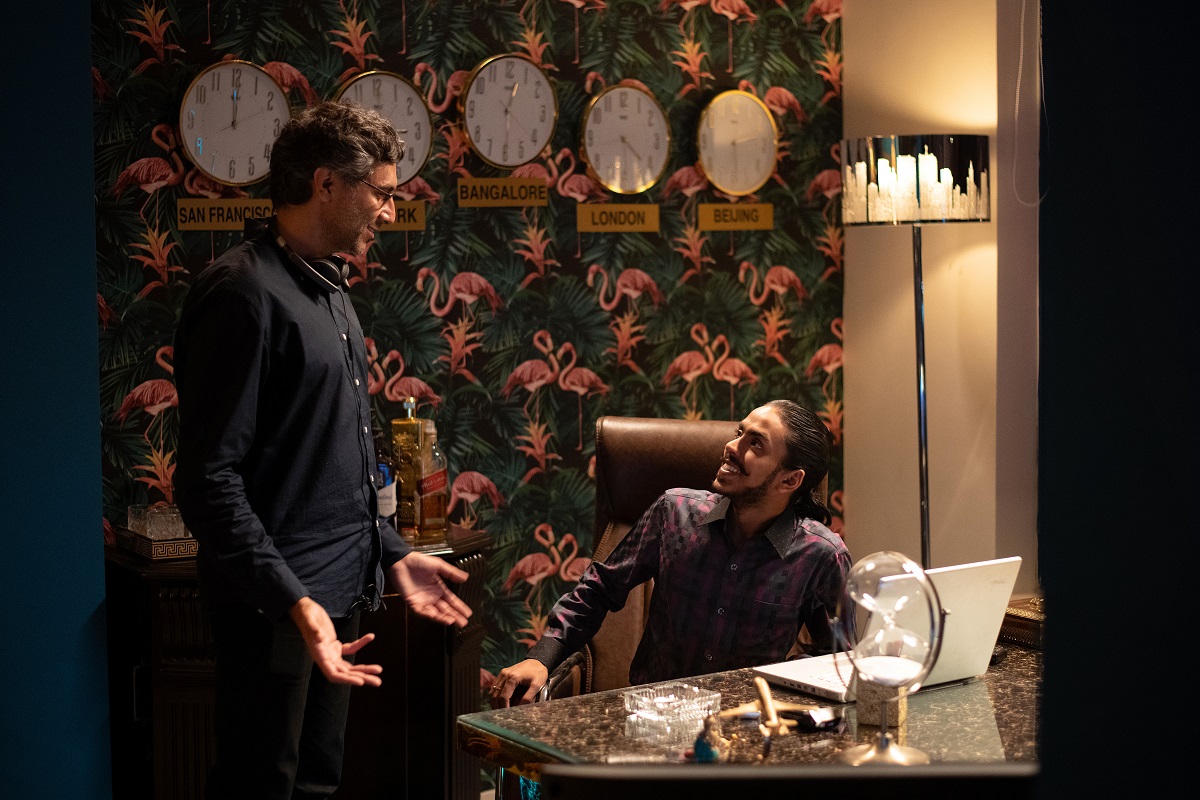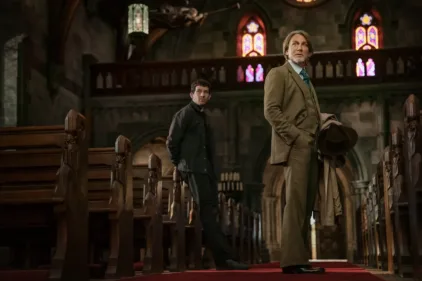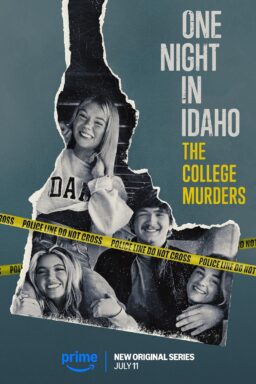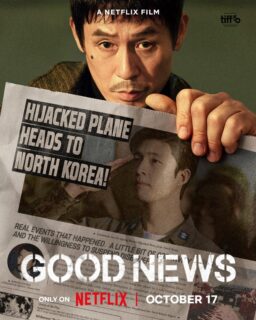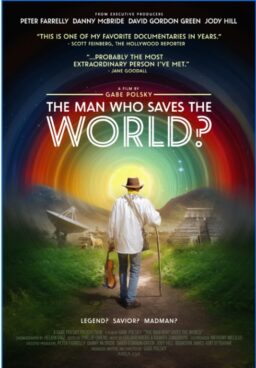Perhaps it was fated that Ramin Bahrani would direct an adaptation of Aravind Adiga’s Man Booker Prize-winning novel, The White Tiger—the book is dedicated to him, after all. As friends and former classmates at Columbia University, Bahrani read drafts of Adiga’s novel four years before it was published and became a New York Times bestseller. In the years since, Bahrani was hailed by Roger Ebert as a “new great American director” after the release of his films “Man Push Cart,” “Chop Shop,” and “Goodbye Solo.” Those movies demonstrated an affinity toward those struggling on society’s margins, and Bahrani’s career has continued in that mode. More mainstream fare like “At Any Price” and “99 Homes” considered the failings of the American dream, while Bahrani’s adaptation of Ray Bradbury’s classic “Fahrenheit 451” updated the sci-fi text for our world of social media, real-time streaming, and fake news.
With “The White Tiger,” Bahrani is thinking broader. His first film set outside of the United States and filmed in India over two months, “The White Tiger,” released on Netflix on January 22, follows servant-turned-entrepreneur Balram Halwai (a magnetic Adarsh Gourav). In 2010, Balram is a successful businessman with a gorgeous office and an army of employees; years before, he was the driver for the wealthy married couple Ashok (Rajkummar Rao) and Pinky (Priyanka Chopra Jonas), whom he considers with a mixture of love and loathing. Balram’s criticism of the lower and upper classes, and his frustration with the harsh disparity in India’s socioeconomic environment, are a natural fit for Bahrani’s style.
In an interview—done twice thanks to some technical difficulties the first time around—Bahrani spoke about partnering with Netflix for the first time, the combative power of “The White Tiger’s” final shot, and his reaction to now being part of the Criterion Collection.
Now that we’re on the other side of “The White Tiger” being released on Netflix, what is your feeling since the movie is out?
I guess this is what they mean by the reach of Netflix. It’s pretty incredible. I found out yesterday it was the No. 2 most watched film in the world on Netflix. That’s totally incredible and crazy to think about. Other than I never imagined it for any of my movies, it’s an entirely South Asian cast, it takes place in India, but it’s somehow impacting people not just in that part of the world, but even in the Western world, they seem to relate to it. Maybe, as you asked the other day about what makes it universal, there is something universal in it then, if this many people are seeing it.
There has been this subgenre coming to the forefront, these movies about class—I don’t want to say class warfare, but they’re about friction between the haves and the have-nots. That friction has been motivating you for a long time. What has kept you engaged with that kind of material, and what drew you to it in the first place?
It’s always hard to say exactly what draws you to things. But yeah, I guess it’s been 15 years now since I started making films. “The White Tiger” was the seventh one and the majority of them, probably except for one, have been about the underclass, underdogs, working class, immigrants often. Those unseen, unheard voices in movies—characters not a lot of people want to spend time filming. Maybe it’s because my parents are Iranian. We share that, right? I think that probably has something to do with it. My dad comes from a village very similar to Balram’s. He told us about that growing up in North Carolina. I went and lived in Iran for three years as an adult after finishing college. I’ve been in that village, I lived in that village. Being in Iran somehow I think really was transformational to how I saw myself as a filmmaker, what my vision was going to be, or what I was striving toward, searching for. And it seemed to be about those kind of characters that we don’t normally see, that actually are living like most people, right? I don’t know. It’s just always what I’ve been drawn to.

I remember one time I asked my dad what was the thing that blew his mind most about America, and he had told me grocery stores, because he grew up in Mashad, Iran, and they had bazaars but not the organization of a grocery store. One thing he always said was that doesn’t necessarily make it better, it just makes it different. That was an idea I’ve found in your films too: to be wealthy isn’t to be better. There are obvious advantages to having more money and more power, but that doesn’t make you any less of a human when you don’t have those things.
That’s very well-said, and it sounds very Iranian. Again, it goes back to some of the roots, right? As I say, my dad came from a village like Balram. They didn’t have running water or electricity until he was six. He wore the same pair of shoes—like all the stories you hear—he put newspaper in his shoes to cover up the holes in the winter. You grow up hearing that, but I think hearing it was important, and seeing how my parents chose to live their life was important. What they emphasized was important. But then living [in Iran] for three years makes it more viscerally real, or more immediate, more impactful. When I came back to America, it was just about turning my head and my eyes in directions that I didn’t think a lot of other people were focused on. Because I was interested in those subjects and stories and wanted to learn about things I didn’t know about. At the same time also, I didn’t want to see the same kind of movie got made. I didn’t know how to make that other kind of movie, the more mainstream one. I just didn’t know how to do that.
“The White Tiger” was so much larger in scale and scope, but it still feels very much like your movie tonally—it’s very empathetic, but also very angry. There’s some resentment there. What did you really enjoy about going larger in scale? Was there something difficult you hadn’t encountered before?
It is larger in scale, but a lot of that was just because there were so many scenes and so many locations. The movie was shot over the course of 60 days, but for example, there’s no crane shot in the movie. There’s no crane, really. The resources allow you to bring awesome people. You get to hire the people who are the best in India. You get to bring one DP and one production designer with you from the West; the crew was 99 percent Indian. But you know, when the gaffer Rubb [Bhungdawala], he was an awesome Indian gaffer, when him and the cinematographer [were working on the car accident scene], which was on a very long street when Pinky was driving drunk, when they said they want to change every single street light going all up and down this road, which is a lot, there were the resources to do that and to make it look good and to make it work. Mainly it turned out to be that the creative team had the resources to just accomplish their vision. It wasn’t that we ended up doing anything extraordinary, or took an extraordinary trip or anything. We didn’t build any sets. We might have enhanced some of them. So that was awesome. And probably I felt the impact of the scale of the budget most in post, because we were able to afford some pretty cool songs that you normally can’t get in a movie. Panjabi MC featuring Jay-Z wasn’t cheap. So that was cool.
Hearing that definitely took me back to my college years and that being the hottest jam.
Yeah! Yeah. And everyone knows that, you know?

Something I heard you say recently that really resonated with me was when you talked about how with the advent of the cellphone, it is like you have a sweatshop in your pocket. And I thought about that when the film discusses the idea of America being so “yesterday,” and the future of the world being with the “yellow man and the brown man.” Especially now that the movie is getting high viewership numbers internationally—do you think that’s an idea that people are somewhat responding to, to the failures of globalism?
100 percent. I always felt that way, and I know when we showed the first cut to Scott Stuber, the head of Netflix. He called me, he liked it a lot, the first cut, and he said—I’ll never forget this—he said, “My God, I thought it was going to have global appeal when we greenlit the movie, but in the tragic time of COVID”—this was just April, COVID was just getting its reaches around the whole world—he said, “Now, it’s even more relevant to the world.” And I thought, “My God, he’s right,” because the fault lines of wealth inequality were exposed and the fissures were widened since COVID has started, right? We saw the gap even more, and the pressures became unbearable, untenable. I think people are starting to realize increasingly that the middle class means you barely make it, and if there’s a problem you’re basically in that month-to-month, where if something happens in one month, you collapse in the next month. You’re suddenly being evicted, like we saw in “99 Homes,” or worse. We’re clapping for our health care workers, who many of them have no health insurance, at least in America. Other countries have some more civilized form of health care. So I think that in some tragic way made it more relevant.
You have movies like this, which probe at these ideas and really make you think about them, and you do sometimes get viewers that ask, “What is this movie telling me to do? What’s the directive?” But characters are not always expressing the director’s point of view. In “The White Tiger,” they’re meant to make you question what you accept as the norm, question the status quo, rather than just accept the idea that hard work equals success, and that’s all it takes.
The one thing I don’t want to do with any of my films is preach or deliver a message. First and foremost, you’re just trying to tell an entertaining story with great characters, and in this case, I had Aravind Adiga’s brilliant book. As we talked last time, it was so propulsive, and the main character was so funny and so complex and witty and sarcastic, and in the end of the film you don’t really know what to make of the characters. His immediate masters, Ashok and Pinky, are not horrible people. They’re sometimes good to him, they’re well-intentioned, they’re woke in a way, right? They come from New York. They have some woke liberal ideas. But when push comes to shove, they don’t do the right thing—but the main character also doesn’t do the right thing. He commits some acts that are questionable. Even as we say, “do the right thing,” that makes me think of Spike Lee’s brilliant movie “Do the Right Thing,” where things reach a pressure point that you don’t really know what the right thing to do is exactly. It’s so complex. You don’t want to give an easy answer. You hope the audience will think about it, you hope they’ll talk about it.
The film challenges you to reassess and think for yourself, and the final shot cements that for me—how combative it felt, the breaking of the fourth wall and staring directly into the camera. Can you talk about how that came about, and what inspired that idea?
That’s Aravind’s amazing text from the novel, which totally upended everything. He and I had talked about Crime and Punishment a lot from our days in Columbia and onward as a novel we both admired because it’s unbelievably compelling storytelling. Each chapter is a cliffhanger, you can’t wait to read the next chapter, it’s a fast read. It’s so character-driven, but it’s got this incredible plot. And in the end of Crime and Punishment, of course [protagonist Rodion Raskolnikov] not only confesses his crime, but he asks Sonya for forgiveness and he asks God for forgiveness. And Aravind totally turns all these traditions of narrative and storytelling upside down when the character says what he says, which is that the only nightmare he has is that he didn’t do it, that he didn’t kill his master, that he’s still a servant to another man. And that’s so amazing, that idea. I wanted to go with this risk that suddenly Balram is just talking to his other drivers instead of narrating it to us. So it’s not voiceover, it’s not him just talking to the fourth wall, meaning the audience—he’s talking to the drivers as if they’re the audience. Whether or not he’s actually talking to them or it’s just in his head, I couldn’t really tell you the answer to that. I don’t know.

I thought it was going to require more shots to do because it’s long, it’s a minute-and-a-half scene or something, and it’s the end of the movie. I didn’t want to mess it up. But as we started blocking it out and turning on a camera to see what it would look like, I thought, “My God, this is a oner. This is one shot. If Balram just exits the camera here, and if the camera backs up a little bit, I would have a wall of drivers.” So the conception of it honestly came during the shoot of it. It just seemed to appear there, like I don’t know, some beautiful flower that you happen to notice and then you ask somebody to film it because there it was.
And I like it for all the reasons you said. I like this wall of drivers, or servants, or underclass, or Uber drivers, or Seamless deliverymen. They’re all Balram, basically. They’re all those people. I like them just staring at the audience. Kind of confrontational and a little bit punk or whatever, in a way. And we got this awesome Indian rap artist Divine, I like his music a lot. There’s some really cool Iranian rap; Divine has some similar feeling to that. It’s really edgy and it’s political and social the way that rap originated here in America, at least in Brooklyn and Queens and the West Coast too. We got him to do the track [“Jungle Mantra”]. He comes from the, in his own words, from the slums. So he knows that background of Balram, he knew it, he felt it, and when he sent me the first chorus and the first verses, even without knowing what they meant—of course, I saw the translation one moment later—it felt like the movie. He totally got it, and that was cool to have him. He brought in Pusha T and Vince Staples to be a part of that, and it feels like the end of the movie. It feels like that confrontation, but it’s also kind of fun. My mom dances to it, but so do my younger friends, and my brother’s kids want to dance to it. There was something cool about that music that came into it way later in the process. It had kind of a punk vibe to it.
As soon as you get Pusha T involved, it’s going to be inherently political.
Right? Exactly! And Divine too, he’s that way too.
I will definitely check him out. I haven’t heard him before.
I know you say that, but if you click on any of his videos, it’s like 40 million views. He’s awesome.
That’s such a good reminder of the fact that I live in an incredibly small bubble, in the bubble that is America.
Me too, me too.
We spoke last time about how you realized you were recreating a shot from Abbas Kiarostami’s “The Wind Will Carry Us,” right?
Oh, yes. When Balram is brushing his teeth, which is one of my favorite scenes. It was not planned for him to look into the camera, to look at his teeth, but as I was standing there, I remembered that shot from “The Wind Will Carry Us.” It’s not a special shot; we’ve seen it in many movies. I just never expected it in a Kiarostami movie. And when it came in “The Wind Will Carry Us,” I just liked it; I said, “Wow.” He has experimental films too, but in that style of movie, it felt bold somehow, and memorable. It got me into the character and suddenly onset I just thought of it because the scene involved him brushing his teeth like in “The Wind Will Carry Us.”
Does that happen often as a filmmaker? When you’re onset and when you’re doing your own work, how much do you feel like your own work ends up being in conversation with other films that you admire or enjoy?
It happens sometimes. I don’t think it happens that often because you’re really just trying to be alive to the moment and what you’re seeing. But of course it happens, and sometimes you’re not even remembering the movie or the shot as much as you’re remembering your memory of it, which ends up being some kind of shadow of it. Which is also in a way good because it helps you distill it to the emotion that you got, and you can do it your own way, if that makes any sense.

I’m going to ask you the question that made you laugh a little bit last time. Now that you’re part of the Criterion Collection with “Man Push Cart” and “Chop Shop,” what’s that feeling like?
Oh God. Man. That was awesome. I was so excited. Peter [Becker, Criterion president] and Fumiko [Takagi, Criterion executive producer] had called me—my God, two years ago now—about it. And then early last year, they said, “OK, we would like to get this to now, we have the opening.” And so it was awesome. I hadn’t looked at either film honestly in 15 years, and I got to watch them again, which was very emotional and a weird experience to see them again. But it was great. I had a chance to remix those films, which I was very happy about, and we did some color work on them again. It was awesome to be with a couple of the actors again, Ahmad [Razvi, of “Man Push Cart”] and Alejandro [Polanco, of “Chop Shop”], and we were able to do an interview with them. The place I watch most movies is Criterion Channel, and God knows how many Criterion DVDs I have. I mean, I have a lot of them. It’s kind of awesome, I confess. I was really thrilled with that.
Did they let you into the Criterion Closet?
… Yes. Yes. And when I got embarrassed, they just kept putting more and more into my bag. It was pretty cool.
So much of your work, and other films like Ken Loach’s “Sorry We Missed You,” Boots Riley’s “Sorry to Bother You,” Bong Joon-ho’s “Parasite,” Lee Chang-dong’s “Burning”—they come together into this global cinematic conversation about class. Is there anything that you think hasn’t been covered yet?
There’s so many of those subjects and so many of those stories. There’s never going to be an end to them and they’re only going to be exacerbated now by the way the world is going, honestly.
“The White Tiger” is now on Netflix. To read Roxana Hadadi’s review of the film, click here.
